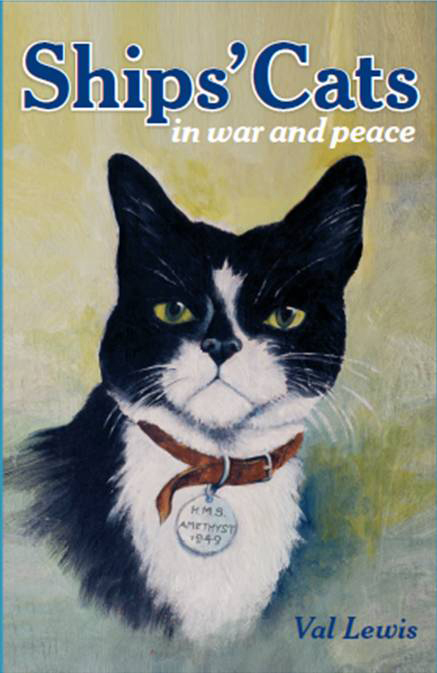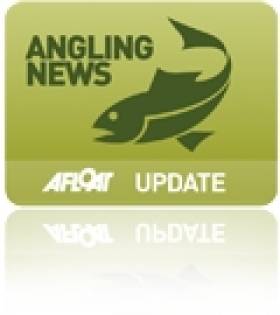Displaying items by tag: Books
New Book Tells Story Of Irish Naval Divers
#Diving - One navy man's "accidental entry" into diving in the 1960s was the birth of what is today Ireland's most advanced underwater unit.
As the Irish Examiner reports, a new book by Martin Buckley titled The Ninth Ship - The Irish Naval Diving Section charts the history of the Naval Service's subaquatic division, which began when Lt Joe Deasy was sent to the UK for months of torpedo anti-submarine training.
Diving happened to be part of the curriculum, and Lt Deasy returned to Haulbowline in 1964 as the Naval Service's first qualified diver.
Within a decade the navy had chalked up its first major team diving operation, on the IRA gunrunning vessel Claudia, and later built a reputation as rescue experts, assisting in the wake of 1979's Bantry oil tanker explosion and the Air India disaster in 1985 among others.
The Irish Examiner has more on the story HERE.
New Edition Of 'Learn To Navigate' Continues Its No-Nonsense Reputation
#HowToNavigate - A new revised edition of bestselling sailing guide Learn to Navigate continues its reputation as the accessible, no-nonsense guide for every boater.
Basil Mosenthal and Barry Pickthall take the reader through every step, from reading charts to understanding tides and much more, giving even novice sailors a sound practical basis in navigation.
Learn to Navigate is available now via Amazon and all good nautical booksellers.
New Pocket-Sized Weather Guide For Coastal & Offshore Sailors
#Weather - Reeds Weather Handbook for Sail and Power is an essential pocket-sized guide that every coastal and offshore boater will want for their next trip.
Author Frank Singleton takes a practical approach, with plenty of clear diagrams to help you understand the weather and what it means for your sailing.
Reeds Weather Handbook is available from Amazon and all good nautical bookshops.
Peggy Bawn Press Launches New Website
#Books - Not content with being Afloat's Sailor of the Month for March this year, boat enthusiast Hal Sisk has put much of his efforts in 2012 into his new publishing venture Peggy Bawn Press, which now has a brand new online presence.
Sisk is commendable for his work both in researching Ireland's seafaring history - making it accessible to less academic mariners - and in restoring ancient boats that provide an insight into the past.
His work on the 1880s clipper Peggy Bawn in particular is a fascinating window into a time of rapid change in design, something he's also made the focus of Peggy Bawn Press with a biography of Scottish boat designer George Lennox Watson by Martin Black - which received a rave review from our own WM Nixon this part March.
And just days ago Tom McSweeney had some kind words to say about Sisk's own new and beautifully illustrated publication Dublin Bay: The Cradle of Yacht Racing, a title he says is sure to provoke debate about Dublin Bay's legacy in the sport.
Both books are available for purchase via the Peggy Bawn Press website, while the latest news on publications can be found on the official Peggy Bawn Press blog.
Extraordinary But True Stories From Angling History
#Angling - The day in 1935 when an American dentist was astounded by a Connemara gillie's way with the local salmon is just one of the 67 anecdotes contained within Fishing’s Strangest Days.
As Derek Evans highlights in his latest Angling Notes column in The Irish Times, Tom Quinn's book is "full of extraordinary but true stories from more than 200 years of angling history".
From dead-sheep bait to whopper-sized catches, intoxicated trout and flying pike, the latest edition of Quinn's collection compiles the choicest gems of bizarre fishing facts.
The publisher's blurb says it all: "Consider the Oxford scientist who in 1910 discovered the marvellous life-giving properties of brandy to fish who had otherwise gasped their last. Or how about the nine-year-old boy fishing for trout who caught a large mussel—containing no less than 40 pearls—and managed to earn more in one day than his father, a farm worker, had earned in the last five years.
"Then there’s the case of the two Americans who had an argument about whether it would be possible to cast a fly from the roof of the Savoy hotel into the Thames. The dispute was finally settled when one of them secured himself to a chimney, and, with the help of a policeman who stopped traffic on the Embankment, finally achieved the feat."
Fishing's Strangest Days is "like a tin of sardines - packed with fishy, bitesize tales guaranteed to have you hooked!" Published by Portico, an imprint of Anova Books, it's available in all good bookshops priced at €14.50.
Warships, U-boats & Liners – A Guide to Shipwrecks Mapped in Irish Waters
#shipwrecks – In Dublin's Custom House today a stunning new book that showcases some of the more spectacular and important shipwrecks in Irish waters was unveiled. Minister for Arts, Heritage and the Gaeltacht, Jimmy Deenihan, TD together with Fergus O'Dowd TD, Minister of State, Department of Communications, Energy & Natural Resources, officially launched the beautifully illustrated "Warships, U-Boats & Liners - A Guide to Shipwrecks Mapped in Irish Waters."
For the past 12 years Ireland's offshore waters and coastal seas have been subject to one of the largest seabed surveys in the world in a joint venture between the Geological Survey of Ireland (GSI) and the Marine Institute. Photographic and sonar images of over 300 shipwrecks have been compiled during the survey in co-operation with the Department of Arts, Heritage and the Gaeltacht's Underwater Archaeology Unit (UAU), part of the National Monuments Service.
The collaboration between the State Bodies has led to the production of the new book which traces the fascinating history of 60 of the most historic shipwrecks around the Irish coast. The narrative combines archaeology, history and marine mapping and includes never before seen graphic imagery of how these shipwrecks lie on the seafloor today. It also provides in-depth historical background to each ship's construction, history and ultimate fate.
The joint GSI and Marine Institute INFOMAR project, and its predecessor the Irish National Seabed Survey, make up the largest civilian marine mapping programme worldwide and, according to Minister O'Dowd, have "truly made Ireland a leader in this field of endeavour." Over a similar period the UAU has built up an extensive database of shipwrecks (The Shipwreck Inventory of Ireland). "The current database holds over 13,000 wrecks", said Minister Deenihan, "and is an essential management tool for the preservation, protection and promotion of Ireland's rich maritime archaeological heritage."
Minister O'Dowd, commented that "as an island nation we instinctively know that our seas are important, but perhaps we are not fully aware of the scale of this natural resource and heritage they hold". He pointed out that "over 80% of our national territory lies beneath our seas, and that many of the benefits that might be realised for the Country from this resource, are as yet undiscovered."
Minister Deenihan remarked that many of the shipwrecks contained in the book "are important links to major events in our past that need to be monitored to ensure they are protected and preserved." The Minister said that there was "a huge maritime dimension to the shaping of our history in the years leading up to the foundation of the State" and that he was "very much aware of the importance of many of these wrecks to our history."
Pointing out that the publication reflected his Department's commitment to creating an awareness and appreciation of archaeology, Minister Deenihan said that it was also "a showcase of some of the best dive sites in the world which will undoubtedly attract many visitors from near and far"
Both Ministers congratulated the authors, Karl Brady (UAU), Charise McKeon (GSI), James Lyttleton (UCC) and Ian Lawlor (BIM), of this publication and highlighted the book as an excellent example of two different government departments working together in partnership, bringing together expertise in archaeology and marine mapping to highlight Ireland's leading role in seabed mapping and protection and promotion of marine cultural heritage.
Boat Jumbles for Dun Laoghaire, Howth and Carrickfergus
If you fancy a rummage through a Bosun's locker then boat Jumble sales on three consecutive weekends and at three separate locations will satisfy all bargain hunters when the Irish boating season kicks off in a fortnight's time.
Each show is offering a range of boating, sailing and water sports equipment and accessories. There are new and used pitches and some familiar trade names in addition to second hand boats/dinghies and nautical “car boot” items.
The first opens on March 27th – the weekend when the clocks go forward – and it takes place on the Carlisle Pier in Dun Laoghaire Harbour from 10am to 4pm.
The next is across Dublin Bay when the RNLI stage a boat jumble at Howth Yacht Club on Saturday 2nd April from 10.30am to 1.30pm.
The last show is at Carrickfergus on Belfast Lough and this 'Irish Boat Jumble' is being promoted as the 'biggest' in Ireland. The Antrim show will be on Sunday 10th April starting at 10am.
All are offering economical rates and friends are being encouraged to team up and pool their surplus gear and share the selling task!
Ship's Cats in War and Peace
These stories of cats from history and legend have been in great demand but earlier editions sold out. Naval men worldwide have provided more tales and pictures of the exploits of their shipboard cats while modern long-distance sailing girl adventurers and canal cruising enthusiasts have told how vital they found a cat’s company (and mousing ability) aboard. There are dozens, from Noah’s cat who (maybe) swam from the Ark, to a patch-eyed, three-legged moggy called Nelson. Who said cats only have nine lives!

The book’s haunting cover picture shows Able-Seaman Simon who, although wounded in the Yangtse Incident while serving in the Royal Navy aboard HMS Amethyst in 1949, comforted injured sailors, and was awarded the PDSA’s Dickin Medal for bravery.
We don't have information on an Irish distributor but it's available now, priced £12.99, from Amazon



































































